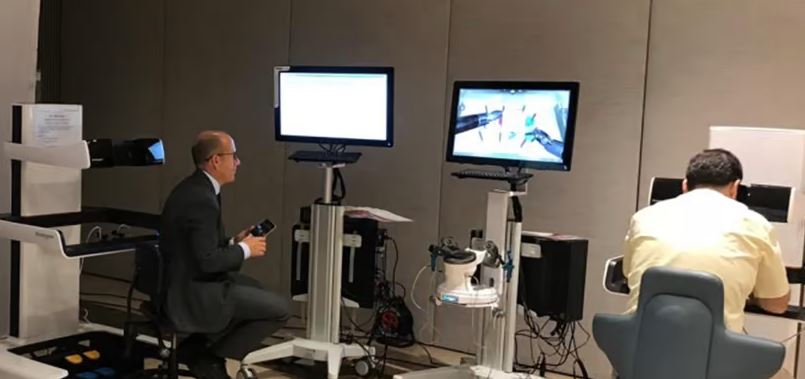技术
- 网络与连接 - 射频识别
- 传感器 - 光学传感器
用例
- 虚拟现实
关于客户
Nooz Optics 是法国眼镜品牌,由企业家 Olivier Doolaeghe 于 2015 年创立。该公司最初发明了“neo 双筒望远镜”,这是一种即用型老花镜替代品,专为现代生活而设计。该产品立即获得成功,Nooz Optics 随之推出。后来,奥利维尔 (Olivier) 的儿子亚历克斯 (Alex) 和安托万 (Antoine) 也加入了公司,公司扩大了产品范围,包括创新太阳镜、老花镜和儿童眼镜。到 2020 年,Nooz Optics 已成为全球知名品牌,在欧洲、英国、加拿大和美国等多个地区拥有四个由 Shopify 提供支持的成功网站。
挑战
Nooz Optics 是一家总部位于法国的眼镜品牌,尽管在全球范围内取得了成功,但仍面临着重大的运营挑战。该公司以其创新太阳镜、老花镜和儿童眼镜而闻名,在欧洲、英国、加拿大和美国等多个地区拥有四个由 Shopify 提供支持的成功网站。然而,其内部系统正在努力跟上不断增加的订单、手动工作流程和缺乏可见性的情况。该公司在耗时的手动流程和临时电子表格上花费了大量的时间和精力。这不仅效率低下,而且还影响了该公司的 Trustpilot 评分,该评分仅为 1。
解决方案
为了应对这些挑战,Nooz Optics 考虑了三个提供商:NetSuite、Microsoft Dynamics 365 和 Brightpearl。该公司最终选择 Brightpearl 是因为其超可扩展的功能和庞大的本机即插即用集成库。实施过程比平均速度要快,仅用了八周时间。这使得 Nooz Optics 能够在几分钟内连接到 Shopify 及其技术堆栈的其余部分。实施后,Nooz Optics 立即获得了 Brightpearl 强大的自动化引擎和市场领先的库存计划程序的访问权限。这消除了耗时的手动流程和电子表格的需要。高级报告也产生了立竿见影的影响,带来了显着的运营改进。
运营影响
数量效益

Case Study missing?
Start adding your own!
Register with your work email and create a new case study profile for your business.
相关案例.

Case Study
Implementing Robotic Surgery Training Simulator for Enhanced Surgical Proficiency
Fundacio Puigvert, a leading European medical center specializing in Urology, Nephrology, and Andrology, faced a significant challenge in training its surgical residents. The institution recognized the need for a more standardized and comprehensive training curriculum, particularly in the area of robotic surgery. The challenge was underscored by two independent studies showing that less than 5% of residents in Italian and German residency programs could perform major or complex procedures by the end of their residency. The institution sought to establish a virtual reality simulation lab that would include endourological, laparoscopic, and robotic platforms. However, they needed a simulator that could replicate both the hardware and software of the robotic Da Vinci console used in the operating room, without being connected to the actual physical console. They also required a system that could provide both basic and advanced simulation training, and a metrics system to assess the proficiency of the trainees before they performed surgical procedures in the operating theater.

Case Study
Fortune 200 IT Services Company Boosts Customer Engagement with Real-Time Matching of Capabilities to Client Needs
The Fortune 200 IT Services Company, a global organization with 130,000 employees across 80 countries, was seeking new ways to differentiate its services in a crowded market. The company had an extensive back catalog of digital transformation projects, but had limited visibility of what they had delivered before. They wanted to exploit these projects more readily to win business. The challenge was to map and match their capabilities to what they were hearing from the client, and what the clients were saying in their strategy papers and company reports. They aimed to present the ideal recommendation and create the most effective transformation roadmap in real time, during client meetings.
Case Study
Stellaris Game Art Production: A Case Study of N-iX and Paradox Interactive Collaboration
Paradox Interactive, the creator of the grand strategy video game Stellaris, needed to release regular updates and downloadable content (DLC) for its games. The challenge was to create appealing game art assets within tight deadlines. The team had to follow distinctive art production guidelines provided by the client, which described a unique art creation pipeline. Another challenge was understanding the multiple races and their specific designs in Stellaris, a game with numerous galaxies and races with different styles and features. The team had to study the game carefully to produce art that matched the game style and ensure smooth project implementation. Additionally, the team faced the challenge of meeting tight deadlines at certain stages of the project, where they had to deliver all the assets in time for the DLC release.
Case Study
VR Solution Development for Training Simulation in American Football
SportsVTS, a US-based company that creates simulated reality training experiences, aimed to develop a VR solution that would enable players to minimize the injury risk and maximize their performance by training in virtual reality. The primary business goal was to create a realistic training simulation to enable a quarterback to master various techniques within a controlled environment and improve his playing ability without the risk of injury. The challenges included developing an AI component to maximize user experience realism, using full-body 3D scan for highly-detailed and hyper-realistic character models, applying corrective BlendShapes for recreating the player’s skeleton and body, using Locomotion Extend System to allow the player to access any part of the field smoothly, developing the character customization system based on real NFL players, tracing the ball trajectory to re-create it with maximum accuracy, integrating the experience with VR hardware, and developing functionality for setting 21 other players on the field.
Case Study
Enhancing Liberal Arts Education with IBM Cloud Technologies: A Case Study of Hong Kong Shue Yan University
Hong Kong Shue Yan University (HKSYU), a liberal arts school, was faced with the challenge of teaching non-technical students how to use advanced technology to enhance their studies. In September 2020, the university launched three laboratories for the study of big data, virtual reality, and robotics with the aim of reinventing liberal arts education and staying relevant in the digital age. The Big Data Laboratory was designed to facilitate studies and support research projects requiring data analytics, machine learning, and data visualization. However, the challenge was to equip the lab with technology that both students and faculty could easily learn and use. The students and faculty members were interested in using technology to support their studies and research but found it complicated to start with.
Case Study
Leveraging Xenko Game Engine for Immersive VR Experiences: A StarBreach Case Study
Silicon Studio, the developer of the open-source cross-platform game engine Xenko, was looking to showcase the impressive graphical capabilities of their product. They aimed to demonstrate the engine's compatibility with VR and its ability to deliver high-quality virtual reality experiences and games. To achieve this, they needed to create a demo game, StarBreach, that would effectively highlight these features. However, they required an experienced art production team that could create high-quality game art for StarBreach. The challenge was not only to create visually appealing assets but also to demonstrate the technological possibilities of the Xenko game engine.







